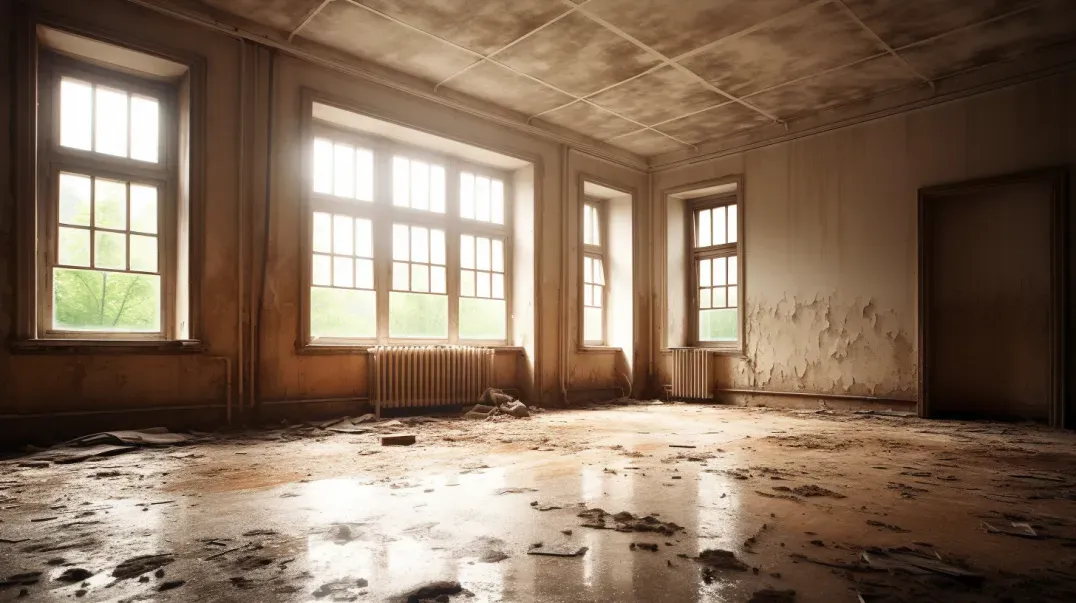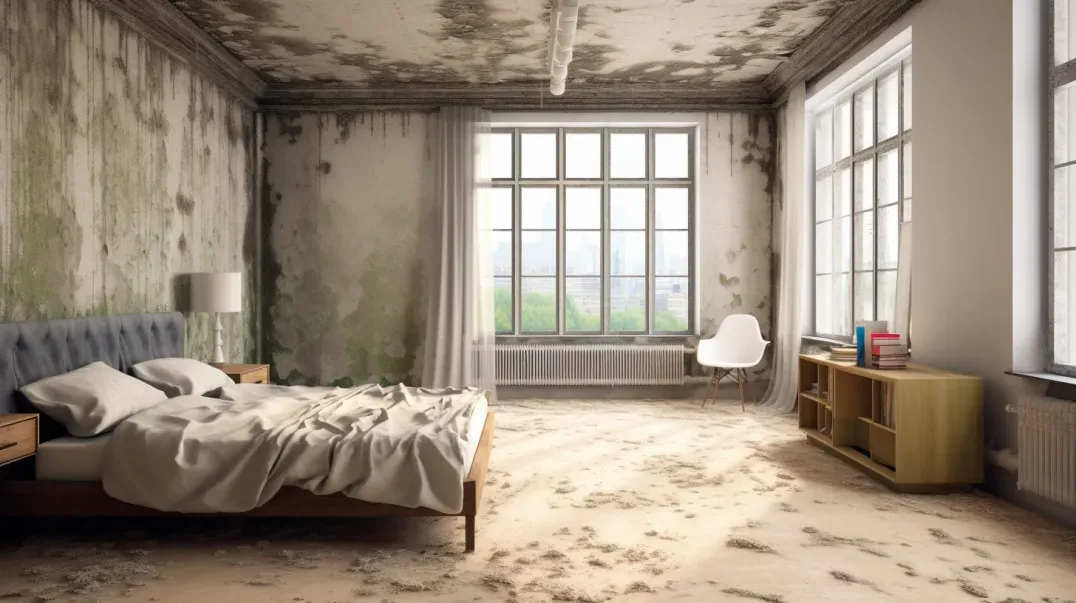The Essential Guide to Mold-Resistant Building Materials
In the realm of construction, the battle against moisture and its consequences is ongoing. Mold, a relentless adversary, poses not only a threat to the structural integrity of buildings but also to the health of their occupants. The use of mold-resistant materials in construction is not just a precautionary measure; it's a critical component in the design and building of safe, durable, and sustainable environments. This blog delves into the significance of integrating mold-resistant materials into construction projects, underscoring their pivotal role in safeguarding against mold growth, which can lead to costly repairs and health issues.
Expert insights and authoritative research underscore the multifaceted benefits of mold-resistant construction materials. From preventing the proliferation of mold spores to enhancing indoor air quality, the advantages extend beyond mere moisture control. We explore the innovative materials and construction techniques that are setting new standards in mold prevention, offering a comprehensive guide for builders, architects, and homeowners alike.
Join us as we navigate through the essentials of mold-resistant construction materials, highlighting their importance in contemporary building practices. Our discussion is grounded in the latest findings and best practices in the field, aiming to equip you with the knowledge and tools to make informed decisions in your construction projects. Whether you're renovating an old space or embarking on a new build, understanding the critical role of mold-resistant materials is paramount in creating healthy, enduring structures for the future.
Understanding Mold in Buildings
Mold in buildings is a pervasive issue that can compromise both the structural integrity of the construction and the health of its occupants. This section of our blog aims to demystify the conditions that lead to mold growth and explore its multifaceted impacts. By grounding our discussion in authoritative research and expert insights, we endeavor to equip our readers with the knowledge needed to effectively combat mold in their environments.
Conditions that Promote Mold Growth
Mold thrives in specific conditions, primarily where moisture and humidity are present. Understanding the environmental factors that encourage mold growth is the first step in prevention. This segment delves into how moisture accumulation, often a result of inadequate ventilation or water leaks, creates a hospitable environment for mold. Additionally, we explore the role of temperature and organic materials in fostering mold proliferation. Buildings with poor insulation or those constructed with certain organic materials can become breeding grounds for mold under the right conditions. By identifying these risk factors, building owners and occupants can take proactive measures to mitigate mold growth.
Impacts of Mold on Buildings and Health
The presence of mold in buildings is not a mere aesthetic concern; it poses significant risks to both the structure and the inhabitants. Structurally, mold can weaken building materials, leading to costly damages and the need for extensive repairs. This section highlights the types of structural damage mold can cause, from deteriorating drywall to compromising the integrity of wooden supports.
Beyond the physical damage to buildings, mold exposure can have serious health implications. Respiratory issues, allergic reactions, and even long-term health conditions can arise from prolonged exposure to mold spores. We provide an in-depth look at the health risks associated with mold, supported by medical research and expert opinions. Our goal is to raise awareness of the importance of mold prevention and remediation to protect both health and property.
Key Characteristics of Mold-Resistant Materials
The selection of mold-resistant materials is a critical decision in the construction and maintenance of buildings that are healthy, durable, and sustainable. This part of our blog focuses on the essential characteristics that make certain materials resistant to mold, offering insights into how these properties can be leveraged to create environments less susceptible to mold growth and the problems it brings.
Material Composition and Properties
The battle against mold begins with the very materials used in construction. Understanding the difference between non-porous and porous materials is fundamental in choosing mold-resistant options. Non-porous materials, such as certain metals, glass, and plastics, offer no foothold for moisture and mold, whereas porous materials, like wood and certain types of stone, can absorb moisture, providing a conducive environment for mold growth. This section delves into the science behind material composition and its impact on moisture resistance, highlighting materials that inherently resist mold due to their physical properties.
Inherent resistance to moisture and mold is a key feature of mold-resistant materials. We explore various materials that are designed or naturally equipped to repel water and prevent mold growth, discussing how these properties are measured and tested. By understanding the characteristics that contribute to a material's resistance to mold, stakeholders can make informed decisions that contribute to healthier and more resilient buildings.
Durability and Maintenance Requirements
The longevity of mold-resistant materials is a significant consideration for builders and property owners alike. This segment examines the durability of various mold-resistant materials, discussing how their resistance to mold contributes to their overall lifespan and structural integrity. We compare the expected longevity of different materials under various environmental conditions, providing a comprehensive overview of what to expect in terms of performance and lifespan.
Ease of cleaning and maintenance is another crucial aspect of mold-resistant materials. Materials that are easy to clean and maintain are less likely to harbor mold and other contaminants over time. This part of the blog offers practical advice on maintaining mold-resistant materials, including cleaning techniques and maintenance schedules that can help preserve their mold-resistant properties. By understanding the maintenance requirements of these materials, property owners can ensure their effectiveness in preventing mold growth for years to come.
Types of Mold-Resistant Building Materials
In the quest to create healthier, more durable buildings, selecting the right mold-resistant materials is paramount. This blog section explores a variety of materials designed to withstand mold, offering insights into their composition, usage, and effectiveness. By understanding the options available, builders, architects, and homeowners can make informed decisions that enhance the longevity and safety of their structures.
Mold-Resistant Drywall and Sheetrock
Mold-resistant drywall and sheetrock represent a significant advancement over traditional drywall due to their enhanced composition that resists moisture absorption—a key factor in mold growth. This segment delves into the materials and technologies used to create these mold-resistant products, highlighting how they differ from and outperform their traditional counterparts. By comparing the characteristics and applications of mold-resistant drywall to standard drywall, we provide a clear rationale for choosing these innovative materials in moisture-prone areas of a building.
Mold-Resistant Paints and Primers
Mold-resistant paints and primers are formulated with additives that prevent mold growth on painted surfaces. This part of the blog explains the science behind these products, detailing how they create an inhospitable environment for mold. We also discuss the situations where mold-resistant paints and primers are most effective, such as in bathrooms, kitchens, and other areas subject to high humidity, providing practical advice for their application and effectiveness.
Mold-Resistant Woods and Lumber
Certain types of wood and lumber are naturally resistant to mold, while others are treated to enhance their resistance. This section explores the variety of mold-resistant woods available, including both naturally resistant species and those treated with safe, effective preservatives. We offer guidance on the best practices for using mold-resistant woods in construction, ensuring that these materials maintain their integrity and mold-resistant properties over time.
Mold-Resistant Insulation
Insulation is crucial for energy efficiency but can be vulnerable to mold if not properly selected and installed. This segment reviews different types of insulation, focusing on products that offer inherent mold resistance. From fiberglass batts to rigid foam boards and spray foam, we cover the pros and cons of each type and provide installation tips that help prevent mold growth, ensuring a healthier indoor environment.
Mold-Resistant Flooring Options
Flooring materials are often exposed to moisture, making the choice of mold-resistant options critical in certain areas of a building. This part of the blog provides an overview of flooring materials that resist mold growth, including tiles, concrete, and advanced synthetic options. We discuss the considerations for selecting mold-resistant flooring, especially for areas prone to moisture, such as basements, bathrooms, and kitchens, guiding readers toward making choices that combine durability, aesthetics, and mold resistance.
Implementing Mold-Resistant Materials in Construction
The integration of mold-resistant materials into construction projects is a proactive step towards creating buildings that are not only durable but also healthy for their occupants. This section of our blog focuses on the critical aspects of planning, design, and installation, offering guidance to ensure that the benefits of mold-resistant materials are fully realized. By adhering to best practices and avoiding common pitfalls, construction professionals can effectively mitigate the risk of mold growth, ensuring the longevity and safety of their projects.
Planning and Design Considerations
The incorporation of mold-resistant materials begins at the planning and design stage of a construction project. This segment explores strategies for integrating these materials into building designs, emphasizing the importance of a holistic approach that considers both the building's specific needs and the environmental conditions it will face. We discuss how to balance cost with effectiveness, providing insights into selecting materials that offer the best return on investment in terms of mold resistance and overall performance. By making informed decisions early in the design process, architects and builders can lay a solid foundation for mold prevention.
Best Practices for Installation
The effectiveness of mold-resistant materials is significantly influenced by how well they are installed. This part of the blog outlines best practices for installation, ensuring that these materials achieve their maximum potential in resisting mold growth. Key topics include proper preparation of the installation site, techniques for sealing and waterproofing, and the importance of ventilation to prevent moisture accumulation. Additionally, we highlight common mistakes to avoid during installation, such as inadequate sealing or improper material handling, which can compromise mold resistance. Through detailed guidance, we aim to empower construction professionals with the knowledge needed to implement mold-resistant materials effectively, avoiding pitfalls that could undermine their efforts.
Beyond Materials: Comprehensive Mold Prevention
While the choice of mold-resistant materials is crucial in mitigating the risk of mold in buildings, a holistic approach to mold prevention encompasses much more. This section of our blog delves into additional, essential strategies that play a pivotal role in maintaining a mold-resistant environment. By focusing on ventilation, humidity control, regular maintenance, and inspection, we aim to equip readers with a comprehensive understanding of how to prevent mold growth effectively, ensuring the health and longevity of their buildings.
Importance of Ventilation and Humidity Control
Proper ventilation and humidity control are fundamental in preventing mold growth. This segment explores the strategies for achieving and maintaining an optimal indoor climate that discourages mold proliferation. We discuss the importance of adequate airflow, the use of dehumidifiers, and the role of air conditioning systems in regulating indoor humidity levels. Additionally, we provide practical tips for everyday activities that can help maintain a mold-resistant environment, such as ensuring bathrooms are well-ventilated and using exhaust fans in kitchens. By implementing these strategies, building owners and occupants can significantly reduce the risk of mold growth, creating healthier living and working spaces.
Regular Maintenance and Inspection
Routine maintenance and inspection are key components of a comprehensive mold prevention plan. This part of the blog emphasizes the importance of regular checks of potential problem areas, such as roofs, pipes, and windows, to identify and address leaks and moisture accumulation before they lead to mold growth. We outline a schedule for routine inspections and maintenance tasks, including cleaning gutters, inspecting HVAC systems, and ensuring drainage systems are functioning properly. By staying vigilant and addressing issues promptly, property owners can prevent mold from gaining a foothold, safeguarding their buildings against damage and health risks associated with mold exposure.
FAQs
Contact Lowcountry Crawlspaces Today!
Lowcountry Crawlspaces will do everything we can to ensure your experience with us is excellent.
Request A FREE Estimate
CHECKOUT RECENT POST
Schedule Your FREE Crawl Space Evaluation Today
There Is No Crawl Space Job We Can’t Fix!







